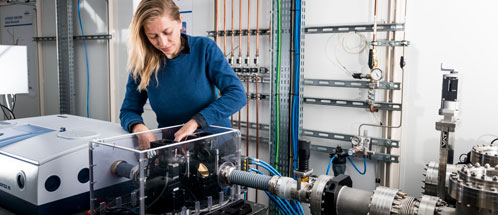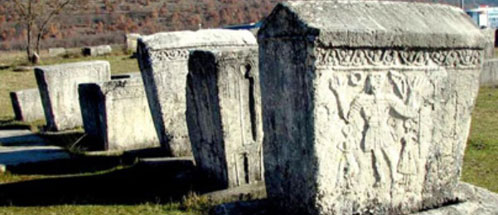Domaševo is an antic colony from the middle ages located in the Old Herzegovina (now Bosnia and Herzegovina). It was first mentioned in the 10th century document Porphyrogenitus written by Constantin VII in the medieval region of Travunia, an administrative unit and principality which was part of the Medieval Serbia (850-1371). Within the historical region, there are remains from three churches which contain several monumental medieval tombstones. They are called "stećci" and have been nominated to the UNESCO World Heritage List as Joint Cultural Heritage. Based on current data, it is likely that the churches were built in the late 15th and early 16th century. One of these is Saint Peter Church, an old Orthodox Christian church founded by Duke Peter Zotovic in the 15th century and in his honour was believed to be buried in the church. In 2014, during an archaeological excavation in the middle part of the old church, a crypt with two skeletons was found. It is known that Zotovic suffered from a disorder of bone mineralization, which was identified in one of the specimens after exhumation. The DNA analysis is running in parallel to confirm the identity of Zotovic.
Now, some samples are being analysed by the researcher from the ALBA Synchrotron Tanja Ducic and her collaborator from the museum of Herzegovina, Trebinje, Stevan Salatic. They are studying the disorder presented in bones as well as the changes undergone over the years. "Ancient bones are important witness of history as they record significant information about past societies and exhibit relevant information about bones at different stages of the human development including the diet, environmental influence and the pathology. The chemical parameters we obtained here, thanks to synchrotron-based Fourier Transform Infrared (FTIR) spectroscopy and microscopy techniques, could be used to understand process of bones' aging, as well as their state, e.g. illness concerning the skeleton during the life time", in words of Tanja Ducic, main researcher of the experiment.
Different synchrotron-based methods have been applied in this project: reflection, transmission, ATR (attenuated total reflectance) and now infrared microspectroscopy analysis at the MIRAS beamline in ALBA. Using these different approaches, the characterization of bones could give information regarding the collagen cross-linking, crystallinity, phosphate and carbonate content, as well as the mineralization and carbonate substitution, which is normally occurring in archaeological bones.
This multidisciplinary project implies the involvement of several diverse groups: archeology, conservation, and spectroscopy groups from four different countries. In the previous study in the collaboration with Camelia Borca from Paul Scherrer Institut (Switzerland) and Anthony Parker from STFC-Rutherford Appleton Laboratory (Oxfordshire, UK), they found out that the heavy metals Ti, Mn and Fe were present in some of bones samples. Secondly, Raman spectroscopy of the male skeleton showed some unusual changes in the bio-mineralization, especially in the parts with visible deformations. This variety of research methodologies will enable to understand the mineralization, recrystallization, collagen loss and the carbonate uptake which directly show chemical state of the ancient bones.


Left, researcher Tanja Dučic at the MIRAS beamline of the ALBA Synchrotron. Right, image of "stecci" tombstones at Trebinje (Bosnia and Herzegovina).




